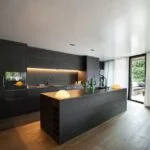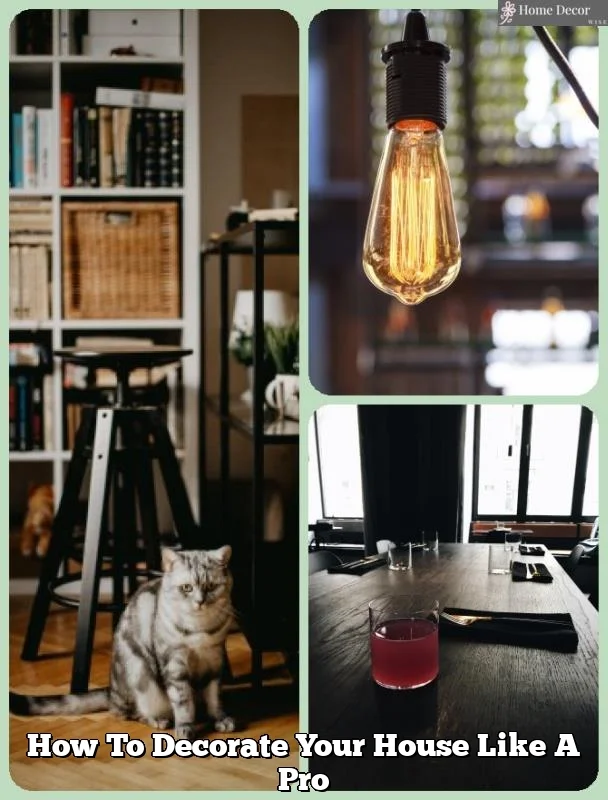How do I decorate my home? This is a common question that many homeowners ask themselves when they are looking to revamp their living spaces. In this article, we will provide you with practical tips and insightful advice on how to decorate your home in a way that reflects your personal style and vision. Whether you are starting from scratch or simply looking to refresh your current decor, we have got you covered.
Assessing Your Space is the first step to understanding your home’s layout and potential. We will guide you through the process of choosing a theme that reflects your personal style and vision for your home decor. Once you have set the stage for your home decor, it’s time to move on to furniture arrangement, color palette selection, adding personal touches, creating ambiance with lighting, DIY decor ideas, and maintaining your space to keep it fresh and vibrant.
By the end of this article, you will be equipped with the knowledge and inspiration needed to embrace your newly decorated home and make it your own. So let’s dive in together and explore the world of home decor.
Assessing Your Space
Consider the function of each room as well. For example, if you’re decorating a living room, think about how you use the space. Do you entertain often? Do you need a designated area for watching TV? Understanding how you use the space will guide your decorating decisions.
In addition to understanding the layout and function of your space, consider its potential. Look for any architectural features that can be highlighted, such as a fireplace or large windows. Also, take note of any areas that may need special attention, such as a small nook that could be turned into a reading corner or an awkwardly shaped room that requires creative furniture arrangement.
| Assessing Your Space | Understanding Your Home’s Layout and Potential |
|---|---|
| Measurements: Walls, Windows, Doors | Determining Furniture Arrangement |
| Function of Each Room | Highlighting Architectural Features |
| Potential Areas for Special Attention | Creative Furniture Arrangement |
Choosing a Theme
When deciding on a theme, consider elements such as your favorite colors, patterns, and design styles. Do you prefer a modern and minimalist look, or are you drawn to a more traditional and cozy aesthetic? Think about the atmosphere you want to create in each room of your home and how different themes can help you achieve that ambiance.
Once you have identified a theme that resonates with you, it’s important to stay consistent throughout your home. This doesn’t mean every room needs to look alike, but rather that there should be a cohesive flow from one space to another. For example, if you opt for a coastal theme in your living room, you may want to carry elements of this theme into adjoining spaces for a harmonious feel.
Incorporating personal touches into your chosen theme is also key. Whether it’s family photos, unique artwork, or handmade decor items, these personal touches will make your home feel truly yours. Remember that choosing a theme is about expressing your individuality and creating a space where you feel comfortable and inspired.
| Theme Selection Tips | Description |
|---|---|
| Consider Your Favorite Elements | Think about colors, patterns, and design styles that resonate with you |
| Stay Consistent Throughout Your Home | Create a cohesive flow from one space to another by carrying elements of your chosen theme into different rooms |
| Incorporate Personal Touches | Add family photos, unique artwork, or handmade decor items to make the space feel personalized |
Furniture Arrangement
When it comes to home decor, furniture arrangement plays a crucial role in maximizing space and functionality. The way you position your furniture can make a significant impact on the flow and feel of a room. Whether you’re working with a small apartment or a spacious house, understanding how to arrange your furniture effectively is key to creating a harmonious living space.
Assessing Your Space
Before diving into the nitty-gritty of furniture arrangement, it’s important to assess your space and take note of any architectural features, such as windows, doors, and built-in elements. Understanding the layout of your room will help you determine the best placement for your furniture to maximize both space and functionality.
Functionality First
When arranging furniture, always prioritize functionality. Consider how you use each room – for example, if it’s a living room, think about where the main seating area should be positioned for optimal conversation and comfort. In a bedroom, focus on creating a cozy and restful atmosphere by placing the bed in a central location away from distractions.
Maximizing Space
In smaller spaces, it’s essential to maximize every inch of available space. Choose multi-functional furniture pieces that serve multiple purposes, such as storage ottomans or nesting tables. Additionally, consider utilizing vertical space with tall bookshelves or wall-mounted storage to free up floor space. By carefully arranging your furniture to make the most of your space, you can create an inviting and open environment that doesn’t feel cluttered or cramped.
Understanding the principles of effective furniture arrangement can transform any living space into a functional and stylish haven. By assessing your space, prioritizing functionality, and maximizing every inch available, you can create an environment that reflects your personal style while still being practical for everyday living. So next time you find yourself asking “how do I decorate my home,” remember that thoughtful furniture arrangement is key.
Color Palette
When it comes to decorating your home, choosing the right color palette is crucial in creating a cohesive and visually appealing space. The colors you select will set the tone for each room and play a major role in the overall ambiance of your home. Here are some tips on how to select a palette that suits your style and complements your space:
1. Consider the natural lighting: Before choosing your color palette, take into account the natural lighting in each room. Rooms with ample natural light can handle darker or bolder colors, while rooms with limited natural light may benefit from lighter and brighter hues.
2. Use color theory as a guide: Understanding basic color theory can help you create a harmonious color palette for your home. Consider using complementary colors, analogous colors, or monochromatic schemes to achieve a cohesive look throughout your space.
3. Take inspiration from your surroundings: Look around your home and take note of any existing elements such as furniture, artwork, or architectural features that could influence your color choices. Pulling colors from these existing elements can help tie the overall look of your home together.
4. Don’t be afraid to experiment: When deciding on a color palette for each room, don’t be afraid to experiment with different shades and combinations. Sample paint swatches or create digital mood boards to visualize how different colors will look together in your space.
5. Seek professional advice if needed: If you’re feeling overwhelmed or unsure about which colors to choose, consider consulting with an interior designer or seeking advice from a knowledgeable salesperson at a paint store.
By carefully selecting a color palette that reflects your personal style and complements the layout of your home, you can create a beautiful and inviting living environment that truly feels like home.
Adding Personal Touches
Incorporating personal touches into your home decor is what truly makes your space feel like home. Whether it’s a unique piece of art, cherished family photos, or decorative items that reflect your personality, adding these elements can create a warm and inviting atmosphere. Here are some tips on how to incorporate these personal touches into your home decor:
- Displaying Art: Choose artwork that resonates with you and complements the style of your home. Whether it’s a painting, sculpture, or photograph, displaying art can add character and personality to your space.
- Showcasing Family Photos: Create a gallery wall showcasing cherished family photos or travel memories. Mix frames of different sizes and styles for an eclectic look that adds a personal touch to any room.
- Decorative Items: Incorporate decorative items such as vases, candles, or figurines that hold sentimental value or reflect your interests and hobbies. These little touches can make a big impact in adding personality to your home decor.
When thinking about how do I decorate my home with personal touches, consider the emotional connection you have to each item. Surrounding yourself with things that hold meaning for you will not only make your space visually appealing but also create a sense of comfort and belonging.
Whether it’s incorporating handmade items from local artisans or displaying souvenirs from memorable trips, injecting personal touches into your home decor is all about creating a space that is uniquely yours. Embrace the opportunity to showcase your individuality through the decor in your home and let it reflect who you are as a person.
Lighting
Assessing Your Lighting Needs
The first step in illuminating your space is to assess the specific lighting needs of each room. Consider the natural light that enters the room during the day and where additional lighting may be required. Evaluate the functionality of each space and consider how different types of lighting (ambient, task, and accent) can enhance these activities. Understanding your lighting needs will help you make informed decisions about the types of fixtures, bulbs, and placements that will best suit your home.
Selecting Lighting Fixtures
When choosing lighting fixtures for your home, it’s important to consider both function and aesthetic appeal. Selecting fixtures that complement your overall theme or style while providing the necessary illumination is crucial. From chandeliers and pendant lights to floor lamps and sconces, there are a wide variety of options available to suit different preferences and design schemes. Additionally, consider energy-efficient options such as LED bulbs to reduce electricity consumption while still achieving the desired ambiance.
Creative Lighting Solutions
In addition to traditional lighting fixtures, there are also creative ways to incorporate light into your home decor. Consider using string lights, lanterns, or even candles to add a unique touch to your space. These creative solutions can add warmth and character to any room while also allowing for customizable illumination based on personal preference. With a mix of traditional fixtures and creative solutions, you can effectively illuminate your space while adding depth and visual interest to your home decor.
By carefully considering your lighting needs, selecting appropriate fixtures, and incorporating creative solutions, you can effectively create ambiance and illuminate your space in a way that complements your overall home decor theme. Taking the time to focus on lighting will not only enhance the functionality of each area but also contribute significantly to the overall aesthetic appeal of your home.
DIY Decor
When it comes to decorating your home on a budget, DIY decor can be a game-changer. Not only does it allow you to save money, but it also gives you the opportunity to showcase your creativity and personal style.
One of the easiest ways to start is by repurposing items you already have. Whether it’s an old picture frame, a set of mason jars, or wooden pallets, there are countless ways to transform these items into beautiful decor pieces for your home.
Another budget-friendly DIY decor idea is to create your own artwork. You don’t have to be a professional artist to make stunning pieces for your home. Simple abstract paintings, quote prints, or even collage art can add a unique and personal touch to your space. Plus, creating your own artwork allows you to tailor the color scheme and style to perfectly complement the rest of your decor.
If you’re feeling adventurous, consider taking on some DIY furniture projects. Upcycling old furniture or building your own pieces from scratch can not only save you money but also give your home a one-of-a-kind look. From coffee tables and bookshelves to headboards and side tables, there are endless possibilities for customizing furniture to fit your style and needs.
Incorporating DIY decor into your home is not only cost-effective but also adds character and personality. By taking the time to create unique pieces for your space, you can truly make your house feel like a home in a way that store-bought items simply can’t match. So if you’re wondering “how do I decorate my home?” – don’t underestimate the power of DIY decor.
Maintaining Your Space
Once you have successfully decorated your home and achieved the look and feel you desire, it is important to maintain it to keep it looking fresh and vibrant. Here are some tips for maintaining your space:
First, regular cleaning is essential in keeping your home decor looking its best. Dusting furniture, vacuuming carpets, and wiping down surfaces will prevent dust and dirt from accumulating and dulling the overall aesthetic of your home.
In addition to regular cleaning, it’s also important to pay attention to any wear and tear that may occur over time. This could include touch-ups to paint or repairs to furniture. By addressing any issues promptly, you can prevent them from becoming larger problems that detract from the overall appearance of your home.
Lastly, consider updating your decor periodically to keep things feeling fresh. This could be as simple as swapping out decorative pillows or artwork, or more involved projects such as rearranging furniture or repainting walls. By making small changes over time, you can keep your home decor feeling current and reflective of your personal style.
By following these tips, you can ensure that your beautifully decorated home remains a place of comfort and style for years to come. Remember that maintenance is just as important as the initial decorating process in creating a space that feels welcoming and reflects who you are.
Conclusion
In conclusion, decorating your home is a process that involves careful planning and consideration of your personal style and preferences. By assessing your space, choosing a theme, arranging furniture, selecting a color palette, adding personal touches, incorporating lighting, and embracing DIY decor, you can create a space that truly reflects who you are.
Once you have completed the decorating process, it’s important to maintain your space and keep it fresh and vibrant. Regularly updating your decor and making small changes can help prevent your home from feeling stale or outdated. This could involve rearranging furniture, adding new artwork or decorative items, or simply changing the color scheme in different rooms.
Ultimately, the most important thing is to make your home a reflection of yourself. Don’t be afraid to experiment with different styles and techniques until you find what feels right for you. Your home should be a place where you feel comfortable and at ease, so take the time to decorate it in a way that makes you happy.
So go ahead and ask yourself: “How do I decorate my home?” – then trust yourself as you embrace your newly decorated home and make it your own.
Frequently Asked Questions
Where Do I Start When Decorating My House?
When decorating your house, it’s important to start by assessing the space and identifying your personal style. Consider the function of each room and how you want it to feel. Start with a focal point in each room, like a piece of furniture or artwork, and build around that.
How to Decorate Your Home for Beginners?
For beginners, decorating your home can seem overwhelming, but start by decluttering and organizing your space. Then, focus on a specific area or room at a time, choosing a color scheme and style that you like. It’s always helpful to seek inspiration from interior design blogs, magazines, or Pinterest.
How Can I Decorate My House Nicely?
To decorate your house nicely, consider incorporating elements such as proper lighting, comfortable furniture, interesting textures, and various decorative accents. Pay attention to details like curtains, rugs, throw pillows, and wall art to add personality and warmth to your space. Don’t forget about the power of greenery – plants can instantly liven up any room.

I’m thrilled to be your companion on this exciting journey through the world of home decor and design. With a passion for turning houses into homes and a keen eye for the finer details, I’m here to help you transform your living spaces into beautiful, functional, and meaningful havens.





